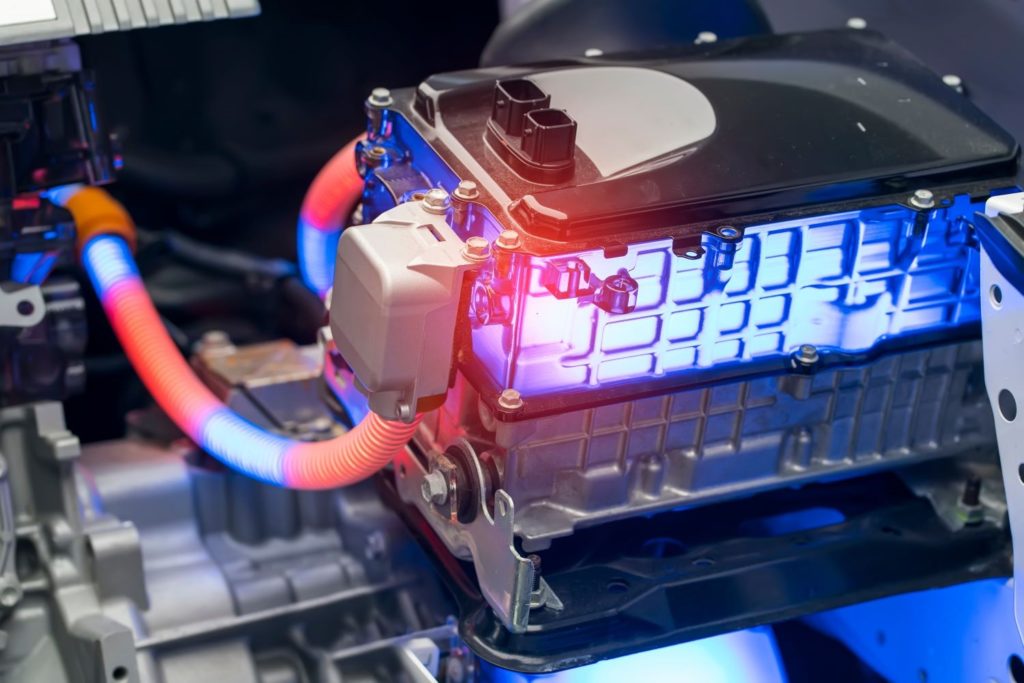There’s a lot of confusion regarding transmissions in electric vehicles (EV). Some say that EVs have “single-speed transmissions” while others believe that EVs have “no transmissions.” Short answer: No, EVs don’t have transmissions. But if you’re itching for a more detailed explanation, we suggest reading the rest of this article to find out what goes inside an EV.
What Are Transmissions?
The transmission uses gears to transmit power from the engine to the wheels. An automatic transmission has a planetary gearset consisting of a sun gear, internal gear, and planetary pinion carrier while a manual transmission has a parallel shaft of rotating gears that multiply engine torque to create more power. Conventional vehicles either come with an automatic or manual transmission.

How Do Transmissions Work in Conventional Vehicles?
Conventional vehicles have internal combustion engines that don’t produce enough power at a low rpm. The speed range in which internal combustion engines produce enough power is impractical because it can lead to engine damage and reduced fuel economy. These engines need a transmission to control torque and make the most amount of power available throughout the vehicle’s driving range.

A manual transmission uses a pair of input and output gears to multiply engine torque. The amount of revolutions an input gear makes in relation to the output gear is called a gear ratio. For example, if the input gear rotates three times for every one rotation of the output gear, this is classified as 3:1. While the output torque is greater than the input torque, the output speed is less than the input speed. This gear ratio can be found on three and four-speed transmissions. If the input and output gears are similar in size, the operating speeds of each gear become equal and torque multiplication is reduced. This gear ratio can be classified as direct drive or 1:1.
An automatic transmission uses a planetary gearset where pinion gears revolve around a sun gear just like how the earth orbits around the sun. Some parts of the gearset can be held stationary while other parts are allowed to turn. A planetary gearset can increase or decrease torque, increase or decrease speed, and reverse the rotation of gears.

What is an EV Powertrain and How Does it Work?
EVs don’t use internal combustion engines like conventional vehicles. They have high-voltage (HV) batteries that can be replenished using an outboard charger and 12-volt batteries that power the vehicle’s low voltage electronics. A DC/DC converter lowers an HV battery’s voltage to a level that a 12-volt system can use. An inverter converts the DC electricity stored in the battery into AC power for the electric motor. The electrical energy is turned into rotational force by the electric motor, which drives the vehicle’s wheels. Most EVs only have one electric motor while others have two for all-wheel drive. These electric motors don’t need multiple gears with different ratios because they can generate consistent torque at any rpm. They also don’t need to build up torque through revving.
Can EVs Have More Than One Gear?
Yes. Newer EVs like the Porsche Taycan and the Audi e-tron GT have multiple gears that drive more torque to the wheels. However, these models are more expensive to maintain than the standard EV that uses a single-ratio drive unit.
Are Transmissions Even Necessary for EVs?
Newer EVs have become more efficient due to advances in automotive technology. Compared to internal combustion engines, electric motors have a much wider powerband. As a result, electric motors can typically operate with only one gear and still deliver satisfactory performance. From a production standpoint, single-speed EVs cost less to build than conventional multi-speed vehicles because they don’t have transmission systems. That translates to more savings for customers. Production costs aside, EVs also have lower ownership costs than conventional vehicles. According to a 2018 study by the University of Michigan, an electric vehicle costs $485 on average to operate each year compared to $1,117 for a gasoline-powered vehicle.
Need OE-Grade EV Components? Look No Further
Just like any other vehicle, your EV will need replacement components like brake pads, body components, and headlights when they break or wear out. Ignoring broken components can compromise some critical vehicle functions, which can make your vehicle unsafe to drive. Luckily, searching for EV components for various brands is easy here at CarParts.com.
CarParts.com offers a great selection of parts and accessories for EVs from the likes of Tesla, BMW, and Lexus, among many others. Our parts are competitively priced, so you can make the necessary repairs without breaking the bank. Furthermore, we only source our products from trusted veterans of the auto parts industry, ensuring that the new belt meets world-class standards.
So, what are you waiting for? Shop for EV parts and accessories today at CarParts.com!
Any information provided on this Website is for informational purposes only and is not intended to replace consultation with a professional mechanic. The accuracy and timeliness of the information may change from the time of publication.

















